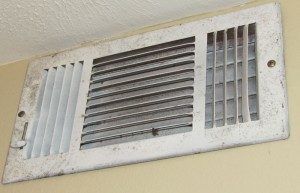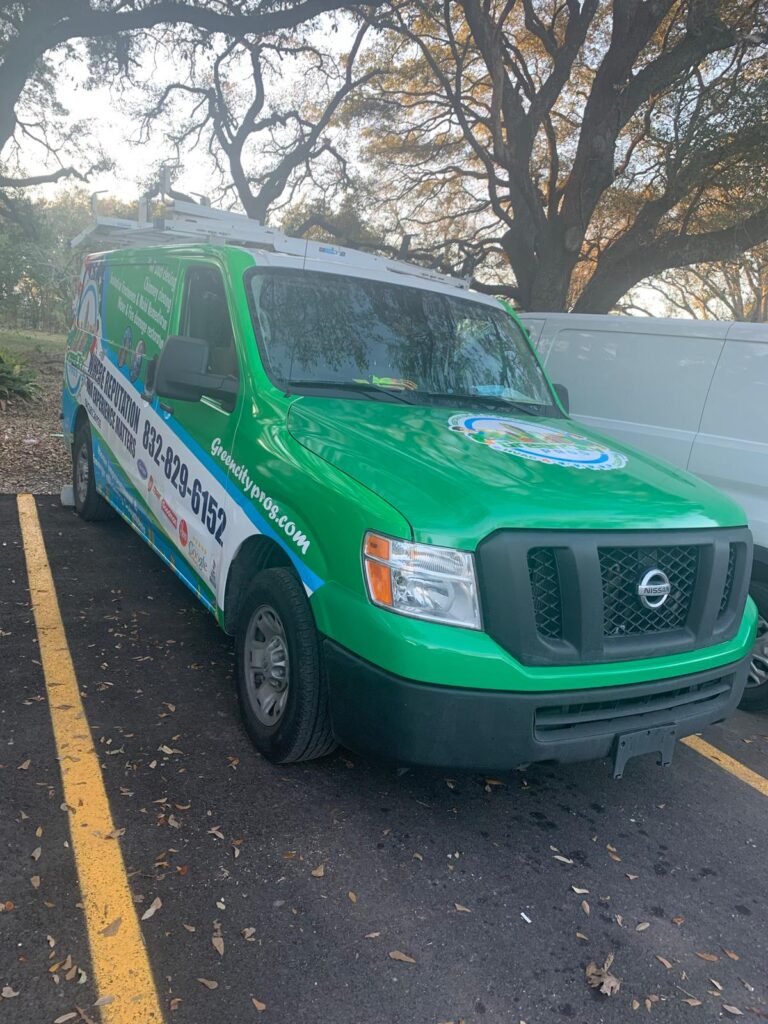Fighting The Unseen Enemy: The Right Way On How To Get Rid Of Mold In Air Ducts Successfully
Over time, the simple HVAC (heating, ventilating, air conditioning) system has evolved to meet all the varied needs of different homes across the United States. There are these straightforward single-stage heating and cooling systems, and then there are the more sophisticated multi-stage HVAC technologies that can save energy costs. Over the last several years, HVAC systems have evolved into different types including zoned systems, heating systems, humidity control and cooling systems. Irrespective of the purpose that these systems serve, Mold can establish colonies inside the ductworks. This article will show you the correct way on how to get rid of mold in air ducts.


Mold infestation usually comes with a musty odor. If there is mold in your HVAC system, you should be able to smell the strange musty odor in multiple adjacent rooms. If the mold problem is quite severe, you should be able to spot the growth around the ducts, in the vents and the other parts of the ductwork. The spores are too small for spotting without specialized equipment, and you will not see any other overt signs until the infestation is rampant. In most cases, people have to rely on their sense of smell to detect the presence of this stealthy intruder in their homes.
What causes mold infestation in the HVAC air ducts?
A warm location with high water vapor content is particularly prone to mold buildup within the ducts. Water vapor can form within the duct system when cold air passes through, and when there is high water vapor content in the outside environment, the water droplets usually collect instead of evaporating. It forms the most conducive environment for mold growth. The nutrition for the mold usually comes from dust, dirt, dead skin cells, pollen, and animal dander that collects over months inside the duct along with the water.
What are the signs of mold in air ducts?
Here are a few definitive signs of mold growth within home HVAC systems:
- A strong mildew-like or musty smell throughout the house or at least in a few adjacent rooms.
- Your nose, throat, and eyes feel irritated when you switch on the air conditioning or step inside an air-conditioned room.
- You are experiencing allergic symptoms including a runny nose, rashes, and watering eyes.
- You or your family is suffering from unexplainable headaches that go away when you step outside.
- You feel nausea, fatigue, and dizziness only when you are home.
- You can see the mold growing within the intake vents and around the air ducts and drip pans.
Therefore, if you live in a warm climate and your home smells musty all the time, you have the perfect reason to suspect a mold infestation within the central air conditioning system. You should never wait for the visible signs of infestation to manifest before taking action. You may not be able to see specific sections of your HVAC ductwork from the outside. In that case, you should ask for professional help.
How can homeowners tackle the problem of mold and how to get rid of mold in air ducts?
Sometimes, the mold problem is not overwhelming, and homeowners prefer to deal with the issue on their own. It calls for some robust DIY mold removal techniques. The EPA recommends the employment of professional mold removing services when the suspected mold cover spreads over ten sq ft. If the infestation in your heating ducts is not as severe, you can try removing the growth with ingredients that you can find at your local Home Depot. Here is information on how to get rid of mold in air ducts.
Removing Mold from Your HVAC System:
Selection of the cleaning solution is the first and the most crucial step that decides the fate of the HVAC system inside your home and ultimately if you are successful in how to get rid of mold in air ducts. The cleaning agent you choose can either remove mold or let it fester secretly. Therefore, you need to be cautious when selecting a DIY solution for your mold problem.
You can use a mix of the following to create your own mold removing solution:
- One tablespoon household detergent
- Half tablespoon
- Baking soda
- One cup
- Water
Alternatively, 1 part bleach in 16 parts water should do the trick on non-porous substances.
You can also buy commercial mold removal solutions. You should try an EPA approved mold removal product for your safety and the best effects.
Time to armor up:
You need a mask, thick industrial grade gloves, coveralls, and safety goggles. You are not just protecting yourself from the mold but also from the chemicals that you might be using to clean them.
Next Steps of how to get rid of mold in air ducts:
- Start by turning off the heating/cooling vents.
- When you can reach the spot, start scrubbing the moldy areas thoroughly with a wet rag or a light brush.
- Repeat the process for a visibly extensive mold infestation.
- Dispose of the rags in airtight trash bags. Use six mil or thicker trash bags for discarding them.
Once you have finished cleaning the visible mold, it is time to make sure that it never comes back! You need to look for EPA registered mold growth inhibitors for this process. These can successfully prevent mold from growing again after the clean-up. Without the application of inhibitors, the fungus is most likely to come back in the same area within a few weeks.
It sounds like a time-consuming task when it comes to the process of how to get rid of mold in air ducts and it surely is. You should be especially careful to dry the area after the cleaning. It is also a process that involves high health risks. Experts will always recommend that you leave the task of how to get rid of mold in air ducts to professionals who have the right equipment to ensure maximum safety to you and your family during the process.
Mold the stubborn intruder: What is the cause?
In most cases, homeowners can most efficiently remove the mold form visible areas. However, molds spread through spores, and the presence of a small colony can lead to a re-infestation in no-time. Mold problems in HVAC systems and subsequent air ducts occur due to humidity and water accumulation in the system. Unless you find out precisely what is responsible for the growth in the first place, you might find yourself fighting a losing battle.
The DIY solutions are only suitable for minor mold problems. These are more effective for isolated cases that do not involve the entire ductwork. For example, if your master bathroom or your storage room smells musty, you can try to scrub the particular duct or vent that aerates these rooms. It is very common for some places to gather mold in the ductwork more than the others. Bathrooms are often more prone to mold infestations since there are higher humidity levels, and water almost never dries up completely. There is a high chance of recurring mold growth in the bathroom, and research shows that over 70% of toilets and showers in the urban areas have sneaky mold problems.
Steps to prevent mold problems in your HVAC system and air ducts:
There are times when home remedies are not enough, and you need to resort to more drastic methods. Mold infestations can be quite stubborn, and not tending to them can lead to more significant expenses. If you have had recurring mold problems in the past couple of years, you should consider the following prevention measures:
- Replace the HVAC system filters.
- Reduce condensation within the ducts by insulating the air ducts.
- Do not forget to clean the drip pans regularly. The collection of water in the drip pan can nurture mold colonies.
- Seal condensation and leaks. Keep the entire duct system dry. However, be careful while approving the use of sealants. The EPA does not recommend the use of sealants except under circumstances where other alternatives are unviable.
- Invest in a good dehumidifier and switch it on near the moldy areas. The resulting low water vapor content in the air will help in the faster evaporation of water from the ductwork and prevent further growth of mold.
- Check the ducts regularly. If necessary, get professionals to inspect your HVAC system at regular intervals for any sign of recurrence. Molds are persistent. They are likely to come back at a conducive spot even after rigorous cleanup regimes.
Why should you consider removing mold from your HVAC system and air ducts?
Having fungus in the corner of a damp room is entirely different from mold growing inside the HVAC system. When mold grows within the central heating, cooling, and ventilation system, there are high chances that every room connected to the vents receives generous amounts of mold spores. As soon as you switch your heater or air conditioner on, the microscopic particles start floating and blowing out with air into the room.
Mold is not just icky or gross. It elicits allergic reactions in most people. It can lead to unwarranted asthma attacks in children and the elderly. The effects are usually immediate. However, there are records of people suffering from rashes, inexplicable breathing troubles and irritation in the eyes. The adverse impacts on health are so expansive that experts are still carrying out studies to find out the various effects of mold on human health.
Aside from allergies, molds can cause several unexplainable reactions in humans and their pets. Almost all of them are the results of inhaling mold and spores. Additionally, duct cleaning reduces the amount of floating dust, skin cells and animal dander in the indoor air. It automatically results in fewer allergies. An HVAC company that can offer mold removal and duct cleaning services can give your home healthier air that is free from strange musty smells, harmful spores, and persistent allergens.
Indoor air quality – the key to a healthy life!
In most homes, the air quality is worse than it is outside. In fact, in the winter or high humidity seasons, the pollutants can be 2 to 5 times higher in concentration than the outside air. The contaminants and irritants come from several regular activities including scratching our skin, smoking, cooking and walking around wearing outdoor shoes.
Mold is one of the leading concerns among all homeowners and the EPA. It is notorious for emanating spores that can cause severe allergic reactions. Neglecting persistent allergies can also lead to anaphylaxis. In fact, the EPA and professional HVAC maintenance services consider mold to be a health hazard since it can also release particulates and VOCs (Volatile Organic Compounds) in the indoor air.
The smart homeowner’s checklist for a mold-free home
- Always ask for mold testing first. Professional mold removal and prevention services offer laboratory analysis of samples taken from air ducts. At times, the collection of dust and cobwebs can look like mold. The only way to confirm an infestation is to run a conclusive test.
- Get to know your HVAC system. Find out the primary material of your ductwork. It can be fiberglass, flex duct or metal sheet. The cleaning methods and the charges usually vary depending on the duct material type.
- The air duct cleaning services should always follow the National Air Duct Cleaning Association’s standards for the procedure. They should use EPA registered/approved products and processes for the effective removal of mold.
- Ask for references and client testimonials from service providers. A reputed HVAC mold removal service provider should be able to provide more than enough satisfactory and genuine client reviews and recommendations from their previous stints.
- Request frequent and periodic inspection of ducts and vents to prevent mold buildup. Mold problems can be recurrent. Ask for professional HVAC tips that can help you keep your indoor air clean in the future. Services should include yearly inspection of the cooling and heating systems along with placement of moisture prevention systems within the HVAC.
Keeping your home clean is easy, but keeping the air inside your house fresh is more than challenging. It is a huge responsibility to ensure that the air you and your loved ones are breathing is free of harmful particles, VOCs, and mold. With the persistent humidity, warmth and water buildup, it is easy for fungus to find a home within your abode. You must be vigilant to keep this uninvited guest out of your home to ensure the proper health of your family and pets.
For over a decade Green City Pros has been the leading service provider in metro Texas and the surrounding areas near you for HVAC services such as air duct cleaning, a/c and heating system repair and installations. For any other information on how to get rid of mold in air ducts please contact us for a free consultation.
Contact Us for more information or to schedule a FREE appointment.

